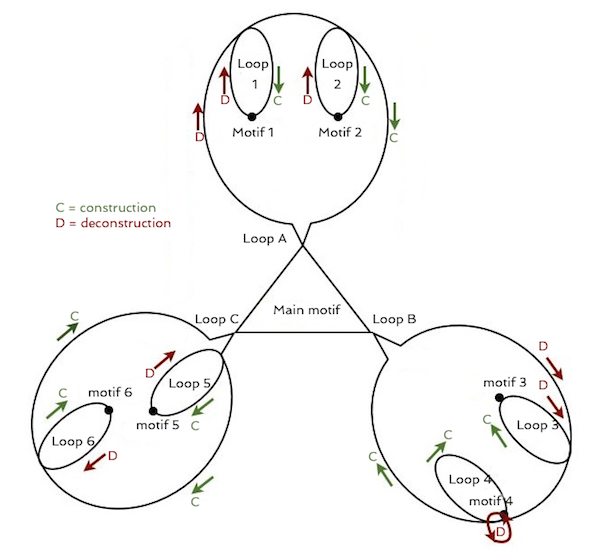Improving the practice and performance of contemporary music
Loops II
General information
- vibraphone solo
- duration 8'30"
- written for the 'Concours International de Vibraphone de Clermont-Ferrand'
- first performance september 2002
- published by Editions Henry Lemoine 27 779 H.L.
Loops II introduces the main motif. From this composition onward, the different transformations have the main motif as a starting and ending point. This influences the overall structure of each composition: the linear structure of Loops I evolves into a more cyclic structure with a central point of departure. The composition contains 3 big loops (labeled A, B and C) with each of these containing two smaller loops inside (labeled with numbers). The diagram below shows the structure of the composition. A detailed structural description is provided on this page.
Although the different transformations are very meticulously composed, it is still possible to enhance their character through the interpretation of the score, specifically by the interpretation of rhythm, pedaling technique, grace note interpretation and mallet positioning on the bar. Suggestions are added to the description of the periods where these techniques can be applied, without loosing out of sight the spirit of the composition itself.
Specifically concerning pedaling during the piece, the composer delineates between non-pedal, full pedal and also 1/2 pedal. The latter is a technique that works very well on a modern piano, but is a bit too idealistic to execute on a vibraphone because of flaws in the way the instrument is built: the dampener can’t dampen every bar in exactly the same way as it is built now. One must use several short full pedals immediately in succession to obtain the 1/2 pedal effect.
